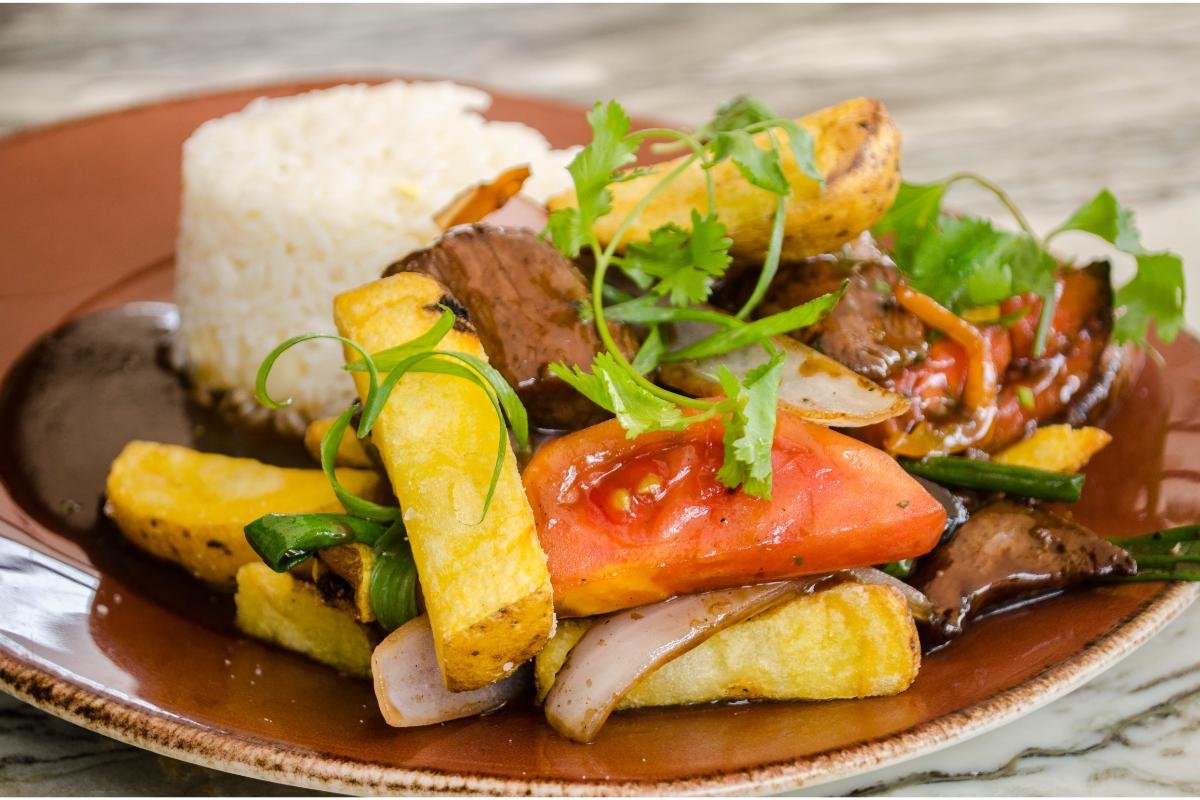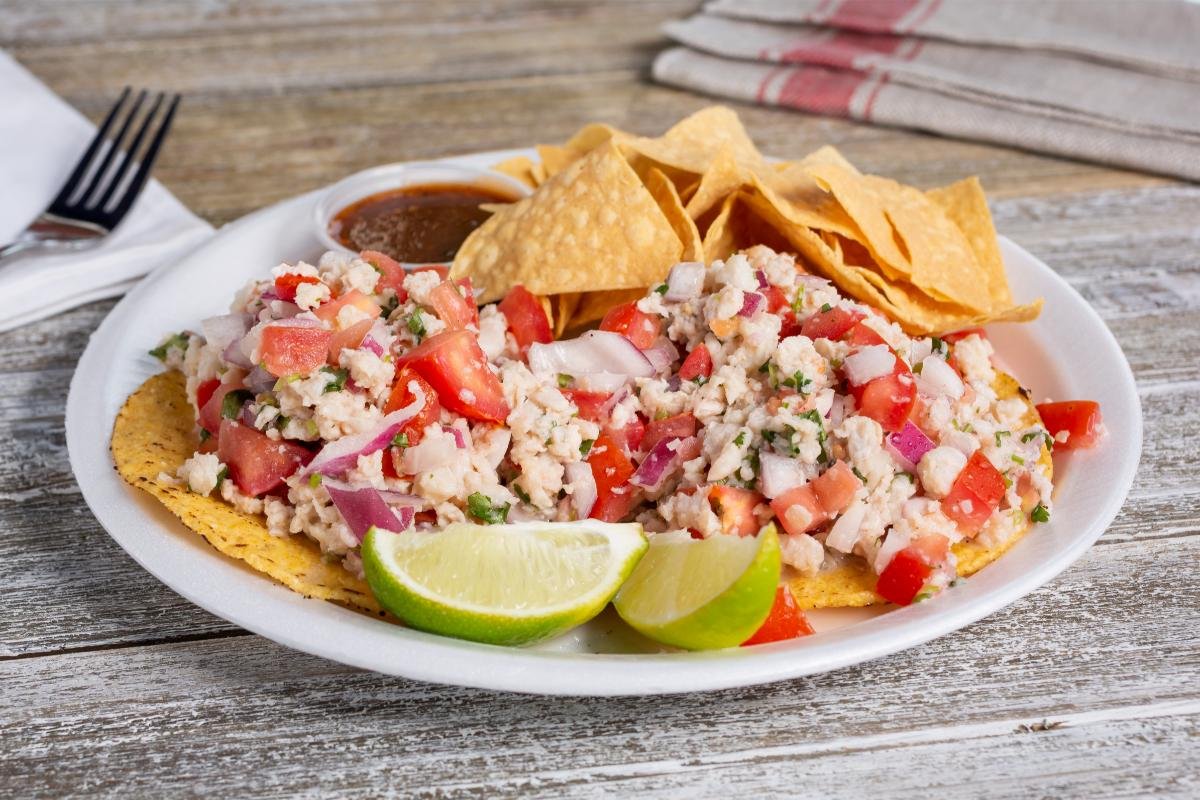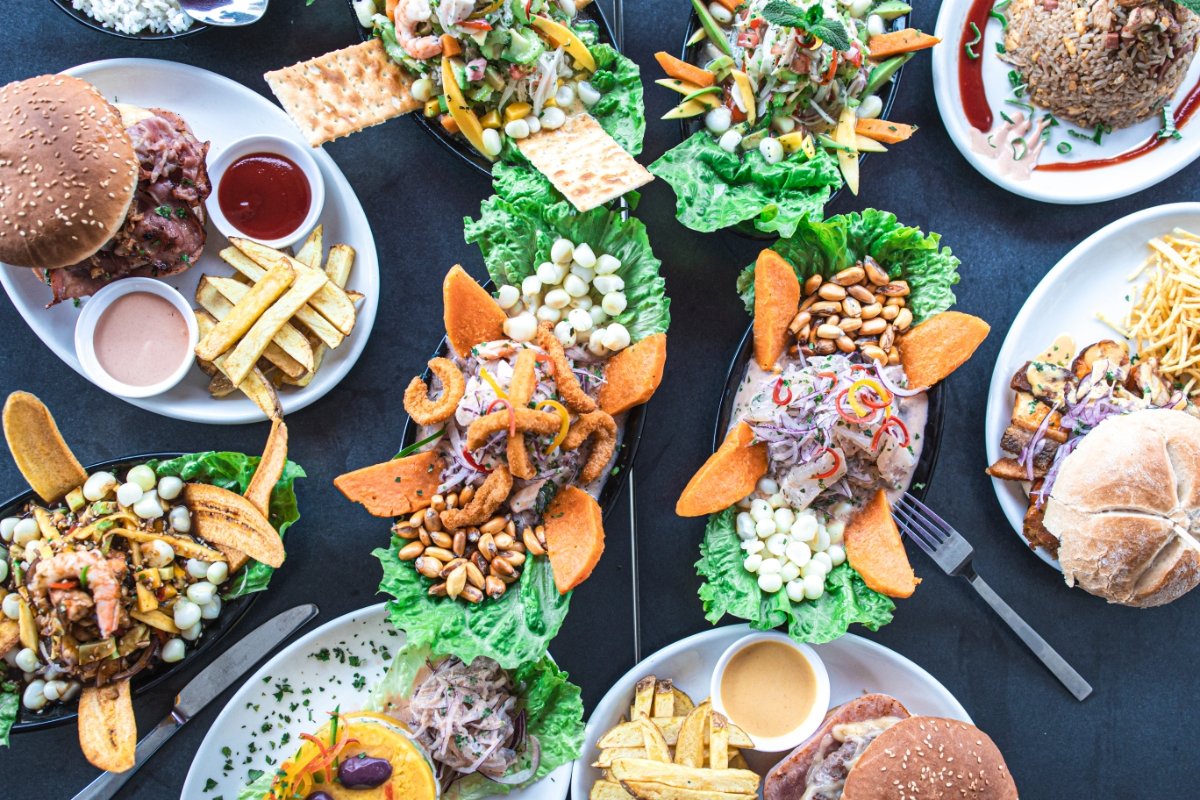Peruvian cuisine, a testament to diversity and historical fusion, stands proudly on the world stage. With its roots tangled in ancient traditions and global influences, it sparks debate among food enthusiasts: What reigns as the best Peruvian dish? This blog embarks on a flavorful journey, exploring contenders that not only tantalize the taste buds but also echo Peru’s rich cultural tapestry.
The Rich Tapestry of Peruvian Cuisine: A Historical Perspective

The history of Peruvian cuisine is a mosaic of innovation, tradition, and cultural convergence. Ancient civilizations like the Incas laid the groundwork with their cultivation of potatoes, maize, and chili peppers, crafting the early chapters of Peru’s culinary saga. The Spanish conquest introduced new ingredients and livestock, weaving European flavors into the fabric of local culinary traditions. The narrative deepened with the arrival of African, Asian, and European immigrants over the centuries, each group infusing its distinct tastes and cooking techniques into Peru’s culinary pot.
This blend of indigenous and international influences has created a unique cuisine characterized by its diversity and depth. Peruvian dishes reflect the country’s varied geography—from the Pacific coast through the Andes mountains to the Amazon rainforest—each region offering its own specialties that contribute to the national culinary identity. The result is a gastronomic landscape as varied and vibrant as Peru itself, where traditional recipes coexist with innovative dishes that speak to the ongoing evolution of Peruvian cuisine.
By understanding this historical context, we appreciate Peruvian dishes not merely as items on a menu but as stories of resilience, adaptation, and cultural fusion. Each ingredient, technique, and recipe tells a part of Peru’s rich history, making the quest for the country’s best dish an exploration of its soul.
Unveiling the Criteria: Defining Peru’s Finest Dish
In the quest to crown the best Peruvian dish, it’s essential to consider a set of criteria that reflect not only the culinary excellence but also the cultural significance and accessibility of each contender. These criteria ensure a comprehensive evaluation, capturing the essence of what makes Peruvian cuisine truly remarkable.
Unmatched Flavor Profiles
The cornerstone of any celebrated dish is its flavor. Peruvian cuisine, known for its bold and diverse taste profiles, requires that its finest dish offers a sensory experience unlike any other. It must harmonize the native aji peppers, citrus, herbs, and other local ingredients into a taste that tells the story of Peru’s geographical and cultural diversity. The winning dish should leave an indelible mark on the palate, combining freshness, spice, and umami in a way that is both innovative and deeply rooted in tradition.
Cultural Embodiment
Beyond taste, the best Peruvian dish must embody the country’s rich cultural tapestry. It should reflect the historical confluence of indigenous, Spanish, African, and Asian influences, serving as a culinary symbol of Peru’s complex identity. This dish acts as a bridge between past and present, showcasing the evolution of Peruvian cuisine while honoring the traditions that have shaped it. Its popularity across different regions of Peru and among various socio-economic groups underscores its unifying power and cultural significance.
Accessibility and Global Appeal
Finally, the title of the best Peruvian dish should go to one that transcends local boundaries, resonating with global audiences. This means that its ingredients are relatively easy to source or substitute worldwide, allowing people from different cultures to recreate and enjoy the dish. Moreover, its appeal should cross culinary preferences, inviting everyone from the adventurous foodie to the comfort-seeking eater to explore the depths of Peruvian flavors.
By evaluating the contenders against these criteria, we aim to highlight a dish that not only stands out for its exceptional taste but also for its ability to convey the richness of Peru’s heritage and its capacity to unite people around the world through the universal language of food.
The Culinary Contenders: A Closer Look
With our criteria set, let’s dive deeper into each contender, exploring how they stand up to the ideals of unmatched flavor, cultural embodiment, and global appeal. This exploration will bring us closer to uncovering the essence of Peru’s finest dish.
Ceviche: A Taste of the Ocean

Ceviche, with its fresh, citrusy flavors, embodies the Peruvian coast’s bounty. The dish’s ability to balance the tanginess of lime with the heat of aji peppers and the freshness of seafood speaks to an unparalleled flavor profile. Moreover, ceviche’s simplicity and its deep-rooted presence in Peruvian culture highlight its importance as a national symbol. Its ingredients, easily sourced in coastal regions worldwide, and its straightforward preparation have helped ceviche gain international fame, appealing to a broad audience and fulfilling our criteria of global accessibility.
Lomo Saltado: Fusion at Its Finest
Lomo Saltado represents the melding of cultures, a dish where Peruvian ingredients dance with Chinese wok techniques. This fusion not only results in a mouthwatering mix of flavors but also tells the story of immigration and adaptation, marking it as a cultural treasure. The widespread love for lomo saltado, both within Peru and abroad, underscores its versatility and ease of preparation, making it accessible to cooks of all levels. Its global appeal lies in the universal love for stir-fry dishes, positioning it as a strong candidate.
Aji de Gallina: Comfort in Every Bite
Aji de Gallina offers a creamy, comforting flavor that warms the heart, combining shredded chicken with the subtle heat of aji amarillo. This dish’s history, rooted in colonial times and adapted over generations, embodies the blending of native and Spanish culinary traditions. While it might not be as well-known internationally as ceviche, its simple ingredients and comforting appeal make it an accessible dish for those looking to explore Peruvian flavors, satisfying our criteria for a dish that resonates on a global scale.
Rocoto Relleno: The Spicy Surprise
Rocoto Relleno, with its bold flavors and hearty stuffing, captures the adventurous spirit of Andean cuisine. This dish showcases the use of local ingredients, such as the rocoto pepper, and reflects the regional diversity of Peruvian cuisine. Its cultural significance is rooted in the city of Arequipa, but its appeal extends beyond, thanks to the growing interest in spicy and stuffed foods worldwide. While the rocoto pepper’s availability might limit global accessibility, the dish’s concept has the potential to inspire variations using local ingredients, meeting the criterion of adaptability.
Each dish, with its unique flavors and story, contributes to the rich tapestry of Peruvian cuisine. As we evaluate them against our criteria of flavor, cultural significance, and accessibility, it becomes clear that the search for the best Peruvian dish is not just about taste—it’s about celebrating the country’s culinary heritage and its ability to connect people from all walks of life.
Conclusion: Celebrating Peru’s Culinary Heritage
As our culinary journey through the heart of Peruvian cuisine comes to a close, it’s evident that choosing the “best” Peruvian dish transcends a mere comparison of flavors. Through the exploration of ceviche, lomo saltado, aji de gallina, and rocoto relleno, we’ve delved into a rich narrative that encompasses history, culture, and the essence of Peru’s diverse geography. Each dish, with its unique story and flavor profile, stands as a testament to Peru’s culinary mastery and its ability to bring people together, regardless of their background.
Embracing the Diversity
The quest to identify Peru’s finest dish has revealed that the true beauty of Peruvian cuisine lies in its diversity. From the coastal freshness of ceviche to the comforting warmth of aji de gallina, the bold flavors of rocoto relleno, and the cultural fusion embodied by lomo saltado, each dish offers a glimpse into the soul of Peru. This variety ensures that Peruvian cuisine can cater to a wide array of palates and preferences, making it uniquely positioned to captivate a global audience.
The Power of Culinary Connection
Moreover, this exploration underscores the power of food to connect us—to our heritage, to each other, and to the world at large. Peruvian dishes, with their rich flavors and compelling stories, invite us to partake in a cultural exchange that enriches our understanding and appreciation of global cuisines. They remind us that food is more than sustenance; it’s a celebration of life and community.
A Call to Culinary Adventure
In recognizing the contenders for the best Peruvian dish, we also extend an invitation to food lovers everywhere to embark on their own culinary adventures. Whether it’s by experimenting with the recipes at home, visiting Peruvian restaurants, or exploring the diverse landscapes of Peru, there are endless opportunities to immerse oneself in the flavors and traditions of Peruvian cuisine.
For those inspired to bring a taste of Peru into their kitchens, exploring authentic Peruvian recipes at https://recipeszap.com/peruvian-recipes-acl-health is a great starting point. Here, you’ll find a treasure trove of dishes waiting to be discovered, each with the potential to transport you to the heart of Peru, one bite at a time.
In Conclusion
While the debate over the best Peruvian dish might remain unresolved, the journey through Peru’s culinary landscape has undoubtedly enriched our palates and our understanding of its cultural tapestry. By celebrating the diversity, the stories, and the flavors of Peruvian cuisine, we pay homage to a tradition that continues to inspire and unite food enthusiasts around the globe.
In the end, perhaps the true essence of Peru’s best dish lies not in singularity but in the collective joy and shared experiences it brings to the table, embodying the spirit of Peru itself—a vibrant, diverse, and welcoming community, united by a love for great food.

